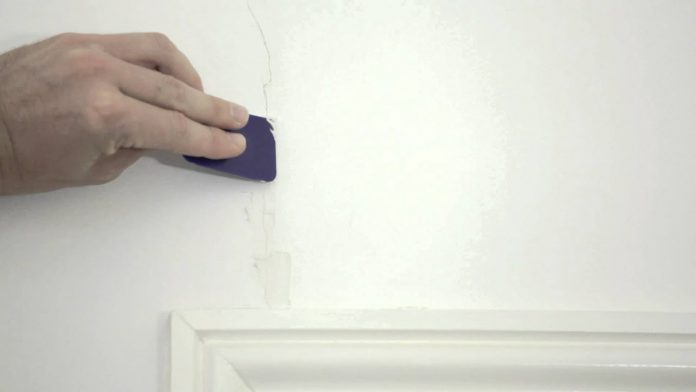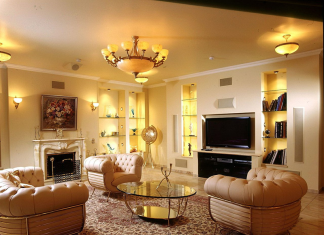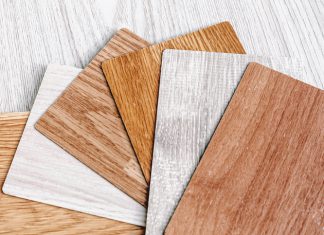The longer a building has existed, the more likely it is to develop cracks in its structure. If you are unsure of what kind of crack has appeared in your ceiling, it is best to get it checked by someone who specialises in ceiling repairs and installations.
Why is there a crack in my ceiling?
Cracks in the ceiling can appear for a number of reasons. Some are superficial and can be easily fixed in no time, while others may signal an underlying issue that needs to be addressed by a professional. Below, we discuss two kinds of cracks to look out for and what they tell you about your ceilings.
Hairline versus Structural Cracks
The size, shape, and location of a ceiling crack can help you investigate the root cause and decide your next step.
- Hairline cracks (or spiderweb cracks), commonly occur in ceilings, walls, concrete slabs, and grout joints. They are more likely to appear as a building ages due to the structure settling, or the buildup of layers of paint. Small cracks are nothing to worry about if they are no bigger than about 1.5mm wide. However, if you are at all concerned, reach out to someone with experience in ceiling installation. Usually, a thin coat of premixed joint compound topped with a coat of paint will easily solve this cosmetic issue. Hairline cracks along the edges of a ceiling are quite normal, but those that appear in the middle of a ceiling or are accompanied by a sagging or bowed ceiling are red flags. These require immediate professional attention as they signal a larger structural issue.
- Structural cracks run across the length of a ceiling and often continue down the walls. These are usually wider than 1.5mm and longer than 60cm, and appear in more places than one. They may run vertically or diagonally through sheets of drywall and be accompanied by bowing or sagging ceilings. These kinds of cracks need to be fixed immediately to keep everyone in the building safe and avoid further costly damage.
What is Causing Your Ceiling to Crack?
The longer a building has existed, the more likely it is to develop cracks in its structure. Also, depending on where you live, your property may be more or less prone to the effects of natural phenomena. Any additional work done to a property can also affect the integrity of its structure and foundation. Below are a number of reasons that might have caused your ceiling to sag, bow, and crack.
- Temperature: Shrinkage or expansion of a structure occur due to fluctuations in the seasonal temperatures. The rapid changes in temperature put a stress on ceiling materials and cause cracks to appear.
- Moisture: Humidity or moisture lingering in the air or seeping through a building structure can cause cracks in the ceiling material and paint. It may be a good idea to check for leaks in the roof or plumbing if water damage appears in your ceiling.
- Settling: Expansion or consolidation of soil beneath your home or office building causes the foundation to move – this is known as settling. All buildings move regardless of the material that they were made of. This is a natural occurrence that happens over time.
- Poor workmanship: The foundation or framing was poorly done when the structure was first built. Additionally, too much or too little water may have been added to the joint compound used.
- Too much weight: Buildings with more than one floor, attics, or poorly installed insulation may cause ceilings to crack from their added weight. Similarly, heavy furniture and electronics added to the floor above a ceiling can put additional pressure on the ceiling joists below.
- Issues with ceiling joists: Damaged, incorrectly sized, and improperly spaced ceiling joists can cause sagging that leads to cracks in the ceiling.
- Changes to walls: Removal of a wall without replacing it with something to support the overall structure can compromise the integrity of a building. Truss uplift, starting where the walls meet the ceiling, can occur due to environmental changes or structural issues that also cause ceilings to crack.
- Natural phenomena: earthquakes, small tremors, landslides, slope creep, sinkholes, and ageing of the building material are just a few examples of natural occurrences that may cause changes to a building that result in ceiling cracks.
Generally, most buildings will develop cracks as they age. Hairline cracks are common and can be a relatively easy weekend job with a quick spot of joint compound and paint. While it may be tempting to simply paint over a larger crack and call it a day, in the long run, this may cost you more than it’s worth. Buildings are large investments that need proper and regular maintenance to get a return on their value. So, to be on the safe side, engage a reputable contractor who specialises in ceiling installation to examine the damage and provide advice on what steps to take next.















